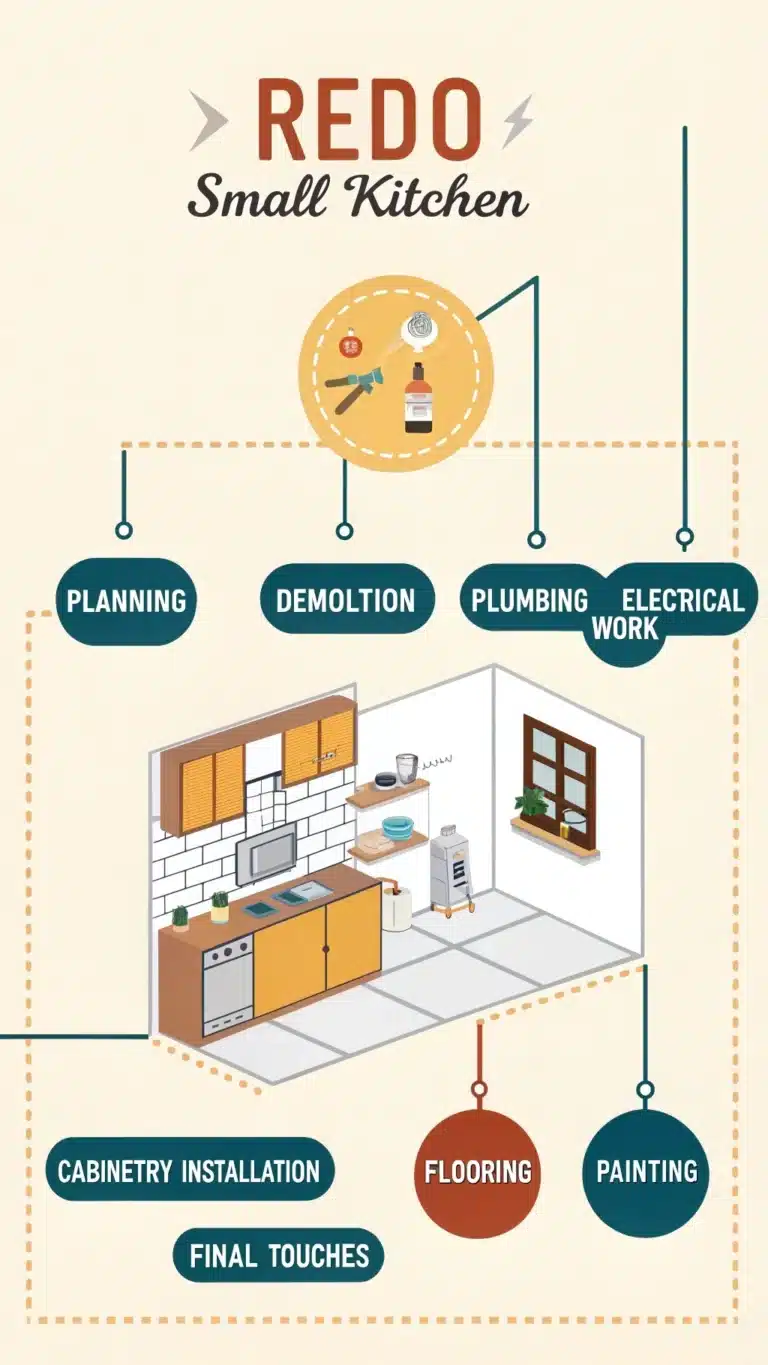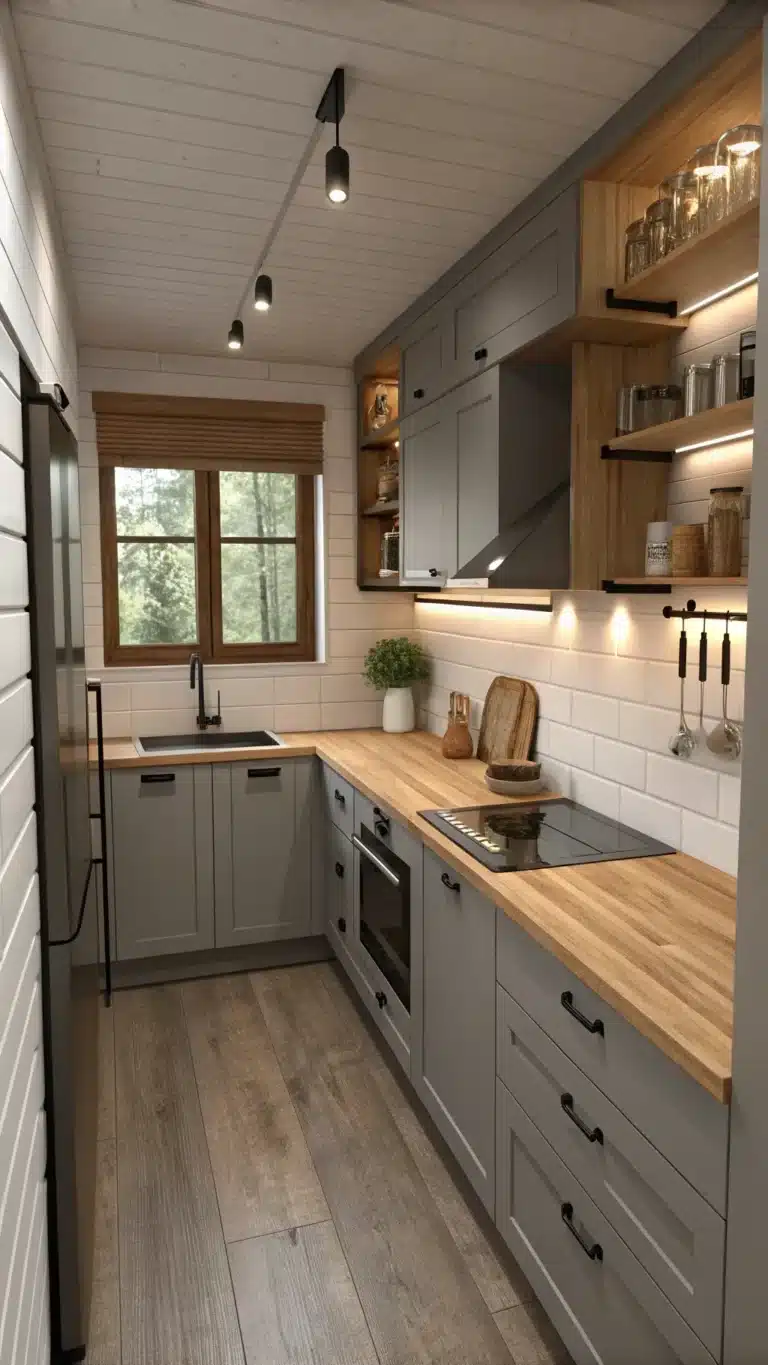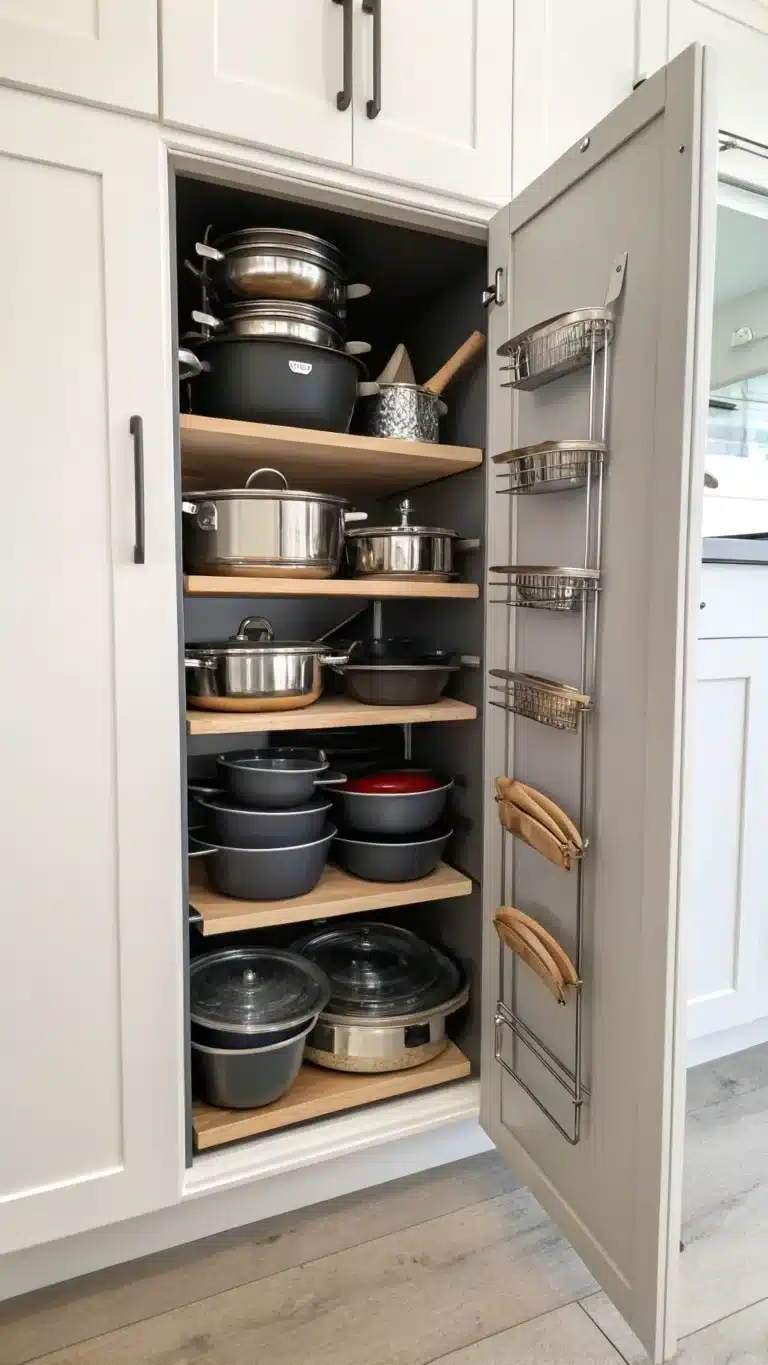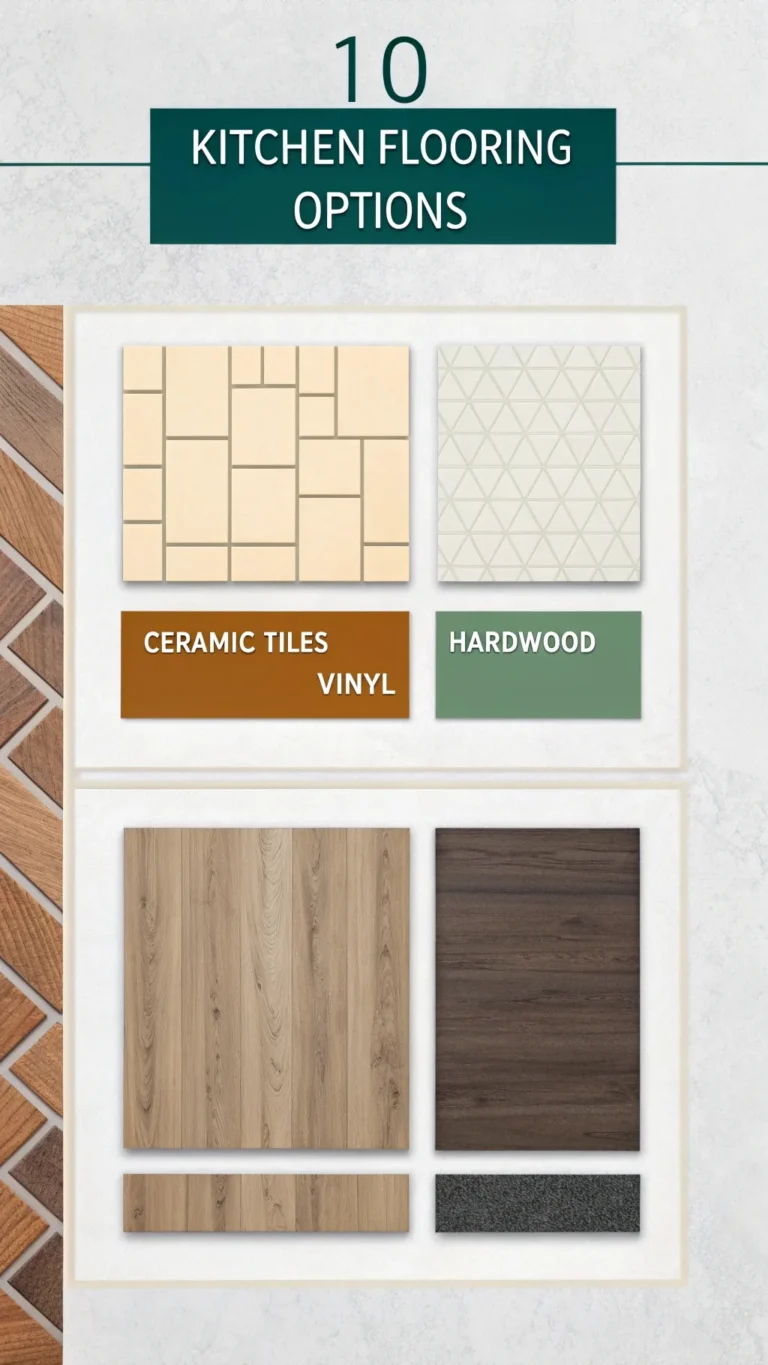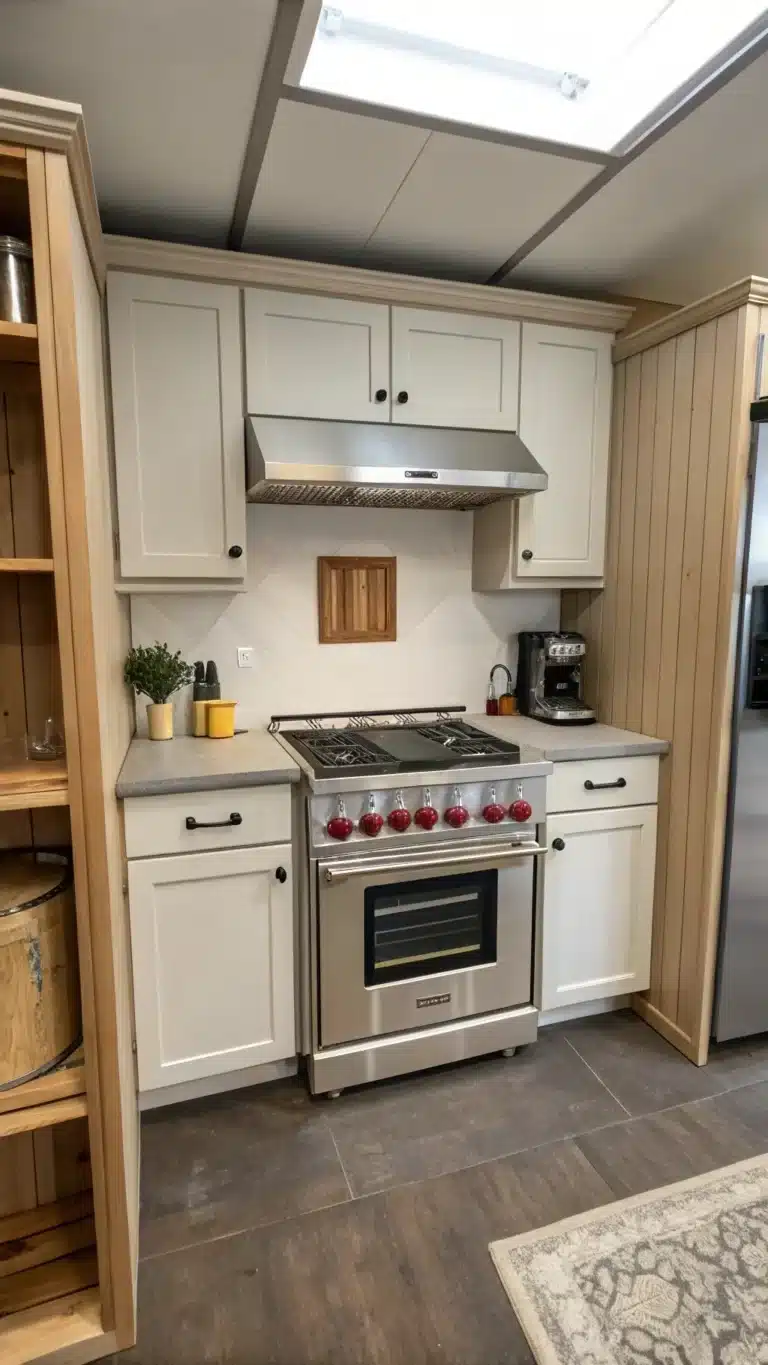Fresh herbs make cooking better. Imagine snipping a sprig of basil or thyme just steps away. The flavor, the aroma, and the simple joy of growing your own herbs add magic to your kitchen. But small kitchens often feel cramped, leaving little space for gardening. That does not mean you cannot have your own herb garden.
This guide shares 10 creative and easy small kitchen herb garden ideas. Whether you have a tiny apartment kitchen or a cozy cooking nook, these ideas fit well. They combine DIY solutions, smart designs, and practical tips to help you grow herbs indoors, no matter your space or gardening skills.
You will find ideas using windowsills, vertical walls, hanging baskets, and even tech-savvy smart gardens. Along with these setups, you get advice on picking herbs, choosing containers, planting, watering, and keeping your plants healthy. Start turning your kitchen into a green, fragrant space today.
Fresh Flavor at Your Fingertips: The Benefits of a Kitchen Herb Garden
Growing fresh herbs in your kitchen offers many benefits:
- Convenience: Step up and grab fresh herbs anytime cooking calls.
- Better Taste: Fresh herbs taste stronger and brighter than dried or store-bought options.
- Aesthetics & Aroma: Green plants brighten the kitchen and fill it with pleasant scents.
- Cost Savings: Growing your own herbs saves money over time versus buying fresh herbs.
- Wellness: Caring for plants helps reduce stress and connects you with nature.
A study by the Journal of Physiological Anthropology shows that indoor plants reduce stress levels and increase feelings of calmness. Having herbs in your kitchen does more than flavor your food; they can brighten your mood.
Choosing Your Culinary Companions: Best Herbs for Kitchen Gardens
Some herbs grow well indoors and add great taste to meals. The best herbs for kitchen garden usually include:
- Basil: Loves warmth and lots of light. Perfect for pasta and salads.
- Mint: Grows fast and spreads. Works great in drinks and desserts.
- Chives: Hardy and requires moderate light. Adds a mild onion flavor.
- Parsley: Prefers bright indirect light; versatile in many dishes.
- Rosemary: Needs good light and drier soil; great in roasts and breads.
- Thyme: Likes full sun and dry soil; perfect in soups and stews.
- Oregano: Thrives in bright light; ideal for Italian dishes.
- Cilantro: Grows best in cooler light; used in salsa and curries.
Start your garden with two or three favorites for easier care. As you grow more confident, you can add others.
What You’ll Need: The Basic Shopping List
Before planting, gather these essentials:
- Seeds or small herb plants/cuttings.
- Potting mix designed for indoor container use.
- A variety of kitchen herb garden containers (pots, jars, etc.).
- Watering tool: can or spray bottle.
- Optional tools: small trowel, pruning shears, and grow lights (if lighting is low).
First, check how much light your kitchen gets. Match herbs and containers to your kitchen’s light and space.
Location, Location, Location: Placing Your Kitchen Herb Garden
The Sunshine Factor: Light Requirements for Indoor Herbs
Most herbs need at least 6 hours of bright, direct sunlight daily. A south-facing window works best. East or west-facing windows can work, but plants may need some help.
North-facing windows usually do not provide enough light for most herbs. In such cases, a grow light can supply artificial sunlight.
The University of Minnesota Extension recommends placing herbs near sunny windows for best growth, or supplementing light when necessary.
Beyond the Windowsill: Creative Placements in Small Kitchens
Limited counter space? Try these spots:
- Shelves near windows: Use small pots or vertical stacks.
- Hanging baskets: Great for trailing herbs like mint.
- Wall-mounted planters: Save precious countertop space.
- Rolling carts: Move plants to catch the sun.
- Avoid placing herbs near stoves, ovens, or cold drafts to keep them healthy.
Potting Up: Choosing the Right Kitchen Herb Garden Containers
Containers affect plant health and grow experience. Common choices include:
- Terracotta pots: Porous and breathable, dries soil well. Need saucers to protect surfaces.
- Plastic pots: Light and moisture-retentive, cheap but must have drainage holes.
- Ceramic pots: Beautiful and sturdy, but heavy. Must include drainage.
- Self-watering pots: Hold water below and wick it up. Good for busy gardeners.
- Repurposed containers: Mason jars, teacups, tins. Must ensure drainage or avoid overwatering.
Special containers like vertical planters, hanging pots, and railing planters save space and add style.
Herb roots need room to grow:
- Basil likes pots at least 6-8 inches deep.
- Chives and oregano manage well in smaller containers.
Measure your available space and light. Choose containers that fit comfortably and suit your kitchen’s style.
From Seed to Sprout: Planting & Initial Care for Your Kitchen Herbs
Soil Matters: Choosing the Right Potting Mix
Do not use garden soil indoors—it can be too dense and carry pests. A good indoor potting mix drains well and breathes.
Mixes with perlite or vermiculite improve drainage and air flow. This keeps roots healthy and prevents rot.
Refer to our article “How to Choose the Right Potting Mix for Containers” for detailed advice.
Step-by-Step: How to Grow Herbs Indoors Kitchen
- Choose pots with drainage holes.
- Optional: Add gravel or pot shards at the container’s bottom to aid drainage.
- Fill the container with potting mix, leaving an inch or two at the top.
- Plant seeds following packet instructions or transplant small herb plants carefully.
- Water gently until water seeps out the bottom.
- Place pots in your chosen well-lit spot.
Watering Wisdom: Getting It Right
The biggest mistake is overwatering. Use the finger test:
- Stick your finger into the soil about one inch deep.
- If dry, water. If still moist, wait.
Water until it drains from the bottom but avoid letting pots sit in standing water. Use saucers but empty them regularly.
Herbs like basil enjoy some humidity. Mist leaves lightly or place pots on pebble trays with water.
Watering in the morning helps plants dry and avoids fungus.
Idea Gallery: 10 Creative Small Kitchen Herb Garden Setups (Part 1)
Idea 1: The Classic Windowsill Garden
This keeps herbs close to the cooking area. Use small pots grouped on the windowsill.
Good herbs: Chives, thyme, mint, small parsley.
Easy to set up but relies on good light.
Idea 2: Vertical Wall Planters
Make use of wall space with pocket planters, mounted pots, or shelves.
Great for narrow kitchens. Install securely.
Water carefully to avoid dripping.
Ideal herbs: Trailing thyme, oregano, mint in contained pots.
Idea 3: Hanging Herb Gardens
Suspend pots from ceiling hooks or shelves with macrame hangers.
Save counter and wall space.
Can be tricky to water without spills and need firm mounting.
Chives and light trailing herbs work here best.
Idea 4: Repurposed Container Creations
Use old jars, teacups, tins, or colanders as planters.
Clean thoroughly to avoid germs.
Add drainage holes or create a gravel layer.
Sustainable and budget-friendly.
Small herbs fit well here.
Idea 5: Tiered Shelf Gardens
Use rolling carts or multi-level shelves for a vertical spread.
Organize herbs by light needs per shelf.
Lower shelves may get less light; rotate plants as needed.
Allows growing many herbs in a compact space.
Tip: For DIY pots, ensure good drainage. If no holes, add coarse gravel inside and water sparingly.
More Inspiring Small Kitchen Herb Garden Setups (Part 2)
Idea 6: Smart Indoor Gardens
Self-contained units with LED lights and automatic watering.
Examples: Click & Grow, AeroGarden.
Easy to care for, work in low-light kitchens.
Initial cost is higher.
Good for beginners and tech fans.
Idea 7: Magnetic Refrigerator Gardens
Attach small magnetic pots to your fridge or a magnetic board.
Space-saving decor.
Limited space and weight restrictions.
Plants like chives or thyme grow well here.
Idea 8: Herb Towers/Stackable Planters
Stack planters vertically to save floor space.
Each tier holds a different herb.
Water carefully to reach all levels.
Good for grouping herbs with similar needs.
Idea 9: Hydroponic/Aeroponic DIY Systems
Grow herbs without soil using water and nutrients.
Requires pumps, containers, net pots.
Faster growth and less mess.
Needs electricity and monitoring.
Often used for basil, mint, cilantro.
Idea 10: Dedicated Herb Garden Cart
Use a rolling cart with multiple levels.
Move herbs to follow sunlight.
Extra space to store garden tools.
Takes floor space but highly flexible.
Group herbs by light demand on different shelves.
Tip: Combine ideas! Use a windowsill garden with a small vertical planter or a smart garden with DIY jars.
Nurturing Your Harvest: Ongoing Care for Thriving Kitchen Herbs
Watering Right (Revisited)
Water frequency depends on temperature, humidity, pot size, and herb type.
Look for drooping leaves or yellowing as signs of watering problems.
Use the finger test daily.
Feeding Your Herbs
Potting mix nutrients fade over time. Feed herbs with diluted liquid fertilizer after 4-6 weeks.
Fertilize every 4-6 weeks during growing seasons (spring and summer).
Avoid overfertilizing—leaves become weak or burn.
Pruning for Bushier Growth & Harvesting
Pinch herbs above a leaf node to encourage new shoots.
Harvest from the top or sides, not more than one-third at once.
Regular pruning prevents legginess.
Dealing with Pests & Diseases Indoors
Watch for spider mites, aphids, and fungus gnats.
Inspect new plants before adding to your garden.
Avoid overwatering to reduce fungal problems.
Treat pests with insecticidal soap or neem oil, using natural methods first.
Check leaves for yellowing or leggy stems; these often signal light or water issues.
Rotate plants under light for even growth.
Tip: Regular harvest keeps herbs healthy and productive.
Your Kitchen Herb Garden Questions Answered
What are the easiest herbs to grow indoors?
Mint, chives, basil, oregano, and thyme are among the easiest for beginners.
How much light do kitchen herbs need?
Most herbs require 6 or more hours of direct, bright light daily, usually from south-facing windows or grow lights.
How often should I water my kitchen herbs?
Water when the top inch of soil dries out. This differs based on environment and pot size; always check before watering.
Can I grow herbs from seeds or cuttings?
Both methods work. Seeds cost less but take longer. Cuttings provide faster plants and are good for beginner gardeners.
Why are my kitchen herbs dying or looking sad?
Common causes include overwatering, underwatering, too little light, poor nutrients, or pests. Check soil moisture and light levels regularly.
Your Thriving Kitchen Herb Garden Awaits!
Fresh herbs add flavor, color, and life to your cooking and kitchen. Even small spaces can host beautiful and productive herb gardens. This guide offers 10 creative small kitchen herb garden ideas you can try.
Whatever fits your kitchen size and style—windowsill pots, hanging gardens, smart indoor units—start small and simple. With the right containers, herbs, light, and care, growing herbs indoors becomes a rewarding habit.
Why wait? Pick an idea that suits your kitchen today. Share your photos and questions in the comments. Let’s make every meal fresh and fragrant with home-grown herbs.
Remember Jane Goodall’s words: “What you do makes a difference, and you have to decide what kind of difference you want to make.” Your small kitchen herb garden is a great place to start.
Internal Links Suggestions:
– Guide to “Best Indoor Plants for Low Light Kitchens”
– Tips on “Choosing DIY Planters”
– Reviews on “Top 5 Smart Indoor Garden Systems”
– Help with “Troubleshooting Common Indoor Plant Pests”
– Advice on “Choosing the Right Potting Mix for Containers”
External Links Suggestions:
– Gardening advice from Gardener’s World
– Kitchen plant ideas at Better Homes & Gardens
Growing fresh herbs is simple fun with a big reward: fresh flavor always at your fingertips.

